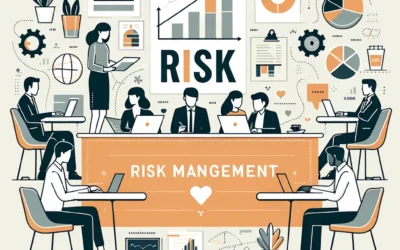Introduction
Stakeholder management is a critical skill for project managers, enabling them to effectively engage and communicate with all parties involved in a project. By mastering stakeholder management skills, project managers can build strong relationships, ensure stakeholder satisfaction, and enhance project success. This article explores the key stakeholder management skills, processes, tools, and practical tips that every project manager should develop to handle stakeholder interactions effectively.
Understanding Stakeholder Management in Project Management
Definition and Importance
Stakeholder management in project management involves identifying, analysing, and engaging with individuals or groups who have an interest in the project’s outcomes. Effective stakeholder management ensures that the needs and expectations of stakeholders are understood and addressed, fostering their support and cooperation. This is essential for maintaining positive relationships and achieving project objectives.
Types of Stakeholders
Project stakeholders can be internal or external and include a wide range of individuals or groups, such as project sponsors, team members, customers, suppliers, and regulatory bodies. Understanding the different types of stakeholders and their interests helps project managers develop tailored engagement strategies. Internal stakeholders are typically involved in the project’s execution, while external stakeholders are those affected by the project’s outcomes or involved in its oversight.
Impact of Poor Stakeholder Management
Inadequate stakeholder management can lead to misunderstandings, conflicts, and a lack of support for the project. Poorly managed stakeholder relationships can result in project delays, increased costs, and compromised quality. Developing and honing stakeholder management skills is essential for project managers to navigate these challenges effectively and ensure project success.
Key Stakeholder Management Skills for Project Managers
Communication Skills
Effective communication is the cornerstone of stakeholder management. Project managers must be able to convey information clearly and concisely, ensuring that stakeholders are informed and engaged throughout the project lifecycle. This includes regular updates, transparent reporting, and active listening to stakeholder concerns.
Relationship Building
Building strong relationships with stakeholders is crucial for gaining their trust and support. Project managers should focus on understanding stakeholder needs, expectations, and motivations. By fostering positive relationships, project managers can create a collaborative environment where stakeholders are more likely to contribute positively to the project.
Negotiation Skills
Negotiation skills are essential for resolving conflicts and reaching agreements that satisfy all parties involved. Project managers must be able to balance assertiveness with empathy, ensuring fair outcomes while maintaining positive relationships. Successful negotiation leads to win-win solutions that benefit both the project and its stakeholders.
Influence and Persuasion
Influencing and persuading stakeholders is vital for gaining their buy-in and support. Project managers need to present compelling arguments, highlight the benefits of the project, and address any concerns or objections. Effective influence and persuasion help in aligning stakeholders with the project’s goals and objectives.
Conflict Resolution
Conflict resolution skills are necessary for managing and resolving disputes that may arise among stakeholders. Project managers should be able to identify the root causes of conflicts, facilitate open dialogue, and develop mutually acceptable solutions. Effective conflict resolution ensures that stakeholder relationships remain positive and that the project stays on track.
Stakeholder Management Process in Project Management
Identify Stakeholders
The first step in the stakeholder management process is to identify all relevant stakeholders. Project managers should create a comprehensive list of individuals and groups who have an interest in the project. This includes both internal and external stakeholders, as well as those who may be directly or indirectly affected by the project.
Analyse Stakeholders
Once stakeholders are identified, the next step is to analyse their interests, needs, and influence. Project managers can use tools such as stakeholder matrices and power-interest grids to categorise stakeholders based on their level of influence and interest in the project. This analysis helps in prioritising stakeholder engagement efforts and developing tailored strategies.
Develop a Stakeholder Management Plan
A stakeholder management plan outlines the strategies and actions needed to engage stakeholders effectively. This includes defining communication channels, setting engagement objectives, and planning for regular updates and feedback. A well-structured plan ensures that stakeholder needs are addressed consistently throughout the project lifecycle.
Engage and Communicate with Stakeholders
Engaging and communicating with stakeholders involves implementing the strategies outlined in the stakeholder management plan. Project managers should ensure that stakeholders are kept informed, their feedback is sought, and their concerns are addressed promptly. Regular communication helps in building trust and maintaining positive relationships.
Monitor and Review Stakeholder Engagement
Stakeholder management is an ongoing process that requires continuous monitoring and review. Project managers should regularly assess the effectiveness of their engagement strategies, gather feedback from stakeholders, and make necessary adjustments. This continuous improvement approach ensures that stakeholder needs are met and that the project remains aligned with its objectives.
Tools and Techniques for Effective Stakeholder Management
Stakeholder Matrices
Stakeholder matrices are visual tools that help project managers categorise stakeholders based on their level of influence and interest. This categorisation aids in prioritising engagement efforts and developing tailored strategies for different stakeholder groups. Stakeholder matrices provide a clear overview of stakeholder dynamics and inform engagement planning.
Power-Interest Grids
Power-interest grids are another visual tool used to assess stakeholders’ influence and interest. By mapping stakeholders on a grid, project managers can identify key players who require close management, as well as those who need regular updates or minimal attention. Power-interest grids help in allocating resources effectively and ensuring that critical stakeholders are engaged appropriately.
Communication Plans
Communication plans outline the channels, frequency, and content of communication with stakeholders. These plans ensure that stakeholders receive timely and relevant information, fostering transparency and trust. Effective communication plans are tailored to the needs of different stakeholder groups and are flexible enough to adapt to changing circumstances.
Stakeholder Analysis Tools
Stakeholder analysis tools, such as stakeholder maps and influence diagrams, provide insights into stakeholders’ relationships, interests, and potential impact on the project. These tools help project managers understand the stakeholder landscape and develop targeted engagement strategies. Stakeholder analysis is crucial for identifying potential risks and opportunities related to stakeholder interactions.
Feedback Mechanisms
Feedback mechanisms, such as surveys, focus groups, and feedback forms, allow project managers to gather input from stakeholders. Regular feedback helps in understanding stakeholder needs, addressing concerns, and improving engagement strategies. Effective feedback mechanisms ensure that stakeholder voices are heard and considered in project decisions.
Practical Tips for Effective Stakeholder Management
Stay Proactive
Proactive stakeholder management involves anticipating stakeholder needs and addressing them before they escalate into issues. By staying proactive, project managers can prevent misunderstandings, build trust, and ensure that stakeholders remain supportive of the project. Proactive management includes regular check-ins, early identification of potential conflicts, and timely responses to stakeholder concerns.
Foster Open Communication
Open communication is essential for building strong stakeholder relationships. Project managers should create an environment where stakeholders feel comfortable sharing their ideas, feedback, and concerns. Encouraging open dialogue helps in identifying potential issues early and ensures that all stakeholders are aligned with the project’s goals.
Build Trust and Credibility
Trust and credibility are the foundations of effective stakeholder management. Project managers should be honest, transparent, and reliable in their interactions with stakeholders. Building trust involves delivering on promises, acknowledging mistakes, and demonstrating a commitment to stakeholder satisfaction. Credibility enhances the project manager’s ability to influence and persuade stakeholders.
Tailor Engagement Strategies
Tailoring engagement strategies to the needs and preferences of different stakeholder groups is crucial for effective stakeholder management. Project managers should consider factors such as stakeholder interests, influence, and communication preferences when developing engagement plans. Customised strategies ensure that stakeholder interactions are meaningful and productive.
Leverage Technology
Leveraging technology can enhance stakeholder management by streamlining communication, improving information sharing, and facilitating collaboration. Project management software, communication tools, and stakeholder engagement platforms can help project managers stay connected with stakeholders and manage interactions more efficiently. Embracing technological advancements ensures that stakeholder management processes are efficient and effective.
Conclusion
Mastering stakeholder management skills is essential for project managers to navigate the complexities of modern project environments. By developing strong communication, relationship-building, negotiation, influence, and conflict resolution skills, project managers can engage stakeholders effectively and ensure their support throughout the project lifecycle. Implementing a structured stakeholder management process and utilising tools such as stakeholder matrices, power-interest grids, communication plans, stakeholder analysis tools, and feedback mechanisms further enhances stakeholder management effectiveness. Continuous improvement and proactive engagement ensure that projects remain aligned with their objectives, ultimately contributing to project success.






0 Comments